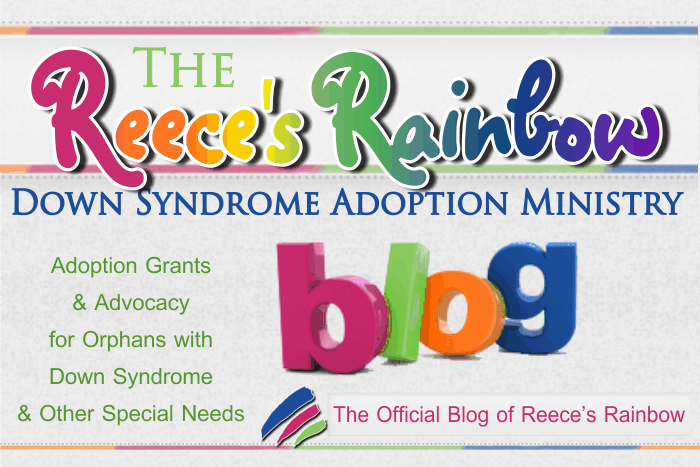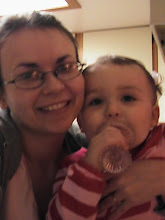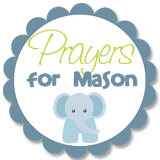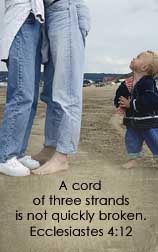 Well world, I'm coming out of the Plagio closet! Why write about this now? I've had plenty of friends (many of you are reading now or about to) worrying about their own little ones and their flat spots. 99% of the time, there's nothing to worry about. But I do have thoughts on the subject. Here is our story...
Well world, I'm coming out of the Plagio closet! Why write about this now? I've had plenty of friends (many of you are reading now or about to) worrying about their own little ones and their flat spots. 99% of the time, there's nothing to worry about. But I do have thoughts on the subject. Here is our story...
Anna was born with a perfectly normal shaped head... kind of. The fact is, it did not 'mold' like babies heads usually do when they squeeze out of the birth canal. This is because of the posterior positioning that she had when she came out (posterior AKA sunny side up... babies aren't meant to come out this way and it's much harder to come out than sunny side down!). She didn't have a cone head whatsoever. I remember looking at her head and thinking that that was a funny little quirk. Being a new mom, I head read a million baby books and watched a million and one Birth Day episodes to know what to expect. Just as it should be, her birth was anything but ordinary. But that's for another day and another story. (As it turns out, children like Anna and Charlie who were posterior, or any other child who didn't sit "right" in the womb tend to tussle with Plagio... same goes for multiples for the same reason!)
When the tummy time days came around, we lived in a little apartment with carpet that was laid directly on top of the concrete floor. She was two weeks old when she got her first go around with tummy time and... she hated it! Big surprise, right? Every kid (with the miraculous exception of one or two) hate tummy time at first. Of course, she screamed and I decided to give her "back time" to get her used to being on the floor. I bet you know what happened next, right? Soft baby skull + time laying on a concrete floor? I began to notice marked flatness by six weeks old. Her head was on the bigger side and when she was around 8 weeks old, she got an x-ray to make sure her sutures weren't sealing early. Other than that, the pediatrician made no comments about the actual shape her head. As it turns out, most pediatricians think this is a more cosmetic issue anyway and being that I was on state insurance at the time, a 2,000 dollar helmet to correct the issue wasn't even an option, so I never brought it up with the pediatrician. I've recently read that "Flat Head Syndrome" has been linked to cognitive and motor delays in a study done on Seattle. So no, it is not just a cosmetic issue any more.
Note: Looking back on it, I should have brought it up with the pediatrician. He could have referred me to a specialist or did a little research for himself (thereby helping a future patient of his, probably). Insurance or lack of insurance shouldn't bar someone from knowledge.
 (Above: Anna, 5 1/2 months old)
(Above: Anna, 5 1/2 months old)On a warm spring day in Seattle, when Anna was 5 1/2 months old, we went down to the chapel at Northwest and sat on the green lawn. It was a little chilly, but it was beautiful. I took lots of pictures of Anna. Then I looked at those pictures. Frankly, I was alarmed. Her head was so flat! I spent many hours doing lots of Googling. "Flat head baby", I would search. I discovered Plagiocephaly. Anna actually fell more into the Brachycephaly category, having a pronounced flat spot on the back of her head. More scared than ever that my child would end up "deformed" and it would be my fault, I felt extreme guilt. I still feel a little guilty. And I was afraid that If I came across people who were a little more educated on the subject, they would think that her flat head was caused by my neglect (which isn't necessarily true, by the way). So, I kept my mouth shut. When I mentioned anything to my husband, he would think I was overreacting. To be honest, I do overreact, but this was something that I felt I had to fix... by myself.

 Being that we were co-sleepers, it made my next move pretty easy. I rolled Anna onto her side at night for months, holding her around her waist. She never turned her head in her sleep, so this was one way I could make sure the pressure was on the side of her head instead of the back. (Please, this is my story, so it isn't medical advice. Please talk to your pediatrician about these things. I'm not saying what I did was the approved thing to do.) Another great thing was that our little girl was a mover and a shaker. At 4 months, she began rolling. At 5 months, she began sitting up. At 7 months, she did the army crawl. At 9 months, she began to properly crawl. At 9 1/2 months, she took her first steps! This certainly must have helped with keeping pressure off the back of her little noggin. Besides that, bows somehow disguised the flatness of her head... it took 2 years before she had enough hair for a clip! haha
Being that we were co-sleepers, it made my next move pretty easy. I rolled Anna onto her side at night for months, holding her around her waist. She never turned her head in her sleep, so this was one way I could make sure the pressure was on the side of her head instead of the back. (Please, this is my story, so it isn't medical advice. Please talk to your pediatrician about these things. I'm not saying what I did was the approved thing to do.) Another great thing was that our little girl was a mover and a shaker. At 4 months, she began rolling. At 5 months, she began sitting up. At 7 months, she did the army crawl. At 9 months, she began to properly crawl. At 9 1/2 months, she took her first steps! This certainly must have helped with keeping pressure off the back of her little noggin. Besides that, bows somehow disguised the flatness of her head... it took 2 years before she had enough hair for a clip! haha (Above: Anna at her 1 year appointment on her first birthday.)
(Above: Anna at her 1 year appointment on her first birthday.)So, where are we today? Anna's face is on the wider side, for sure, but she isn't exactly a petite girl, being in the 75th percentile for height and 90th for weight. She's proportional. When her hair began to come in, it came in with lots of curls, which I was delighted by, it disguised it a bit more. Her head looks much better. When I fix her hair, I still feel the flat spot, but it's much better and I'm really thankful that her face wasn't changed by the Brachy (sometimes the forehead protrudes or changes in shape).
Anna often got "big head" comments as she was growing up. Her head was proportional to her body. I'm sure that the flatness on the back of her head, making her face wider, did not help with her appearance. Nonetheless, I made it a rule after a while of smiling at the comments and boiling inside, that I do not appreciate comments about my childrens' appearances.
As far as family goes, Charlie was also posterior. I keep him off from his head as much as possible. Car seats are for cars, is the rule. I carry him around just as much as I carried Anna around. He switches sides throughout the night as I nurse him, so he spends equal amounts of time on each side of his head. His head wasn't as flat as Anna's was at birth, so I think we had a better "starting point" than we had with Anna. Despite all of this, I still see a teeny flat spot, but from what I've read, that's totally normal and it really doesn't look bad like Anna's was. A lot of children have at least a little flatness in infancy since the Back to Sleep Campaign started up nearly two decades ago. It rounds out as they become mobile. Charlie's flat spot is next to unnoticeable... you know, unless you're an overprotective mom like me hehe. Thank goodness. Now, is my family more educated on Plagiocephaly and Brachycephaly? Unfortunately no. I don't really talk about it at all. Paul has heard most of my thoughts on the subject. My mother-in-law has heard nearly none of it. Flat Head Syndrome is more of a 1990s+ issue. Whew! Now, for pictures of Anna today...













